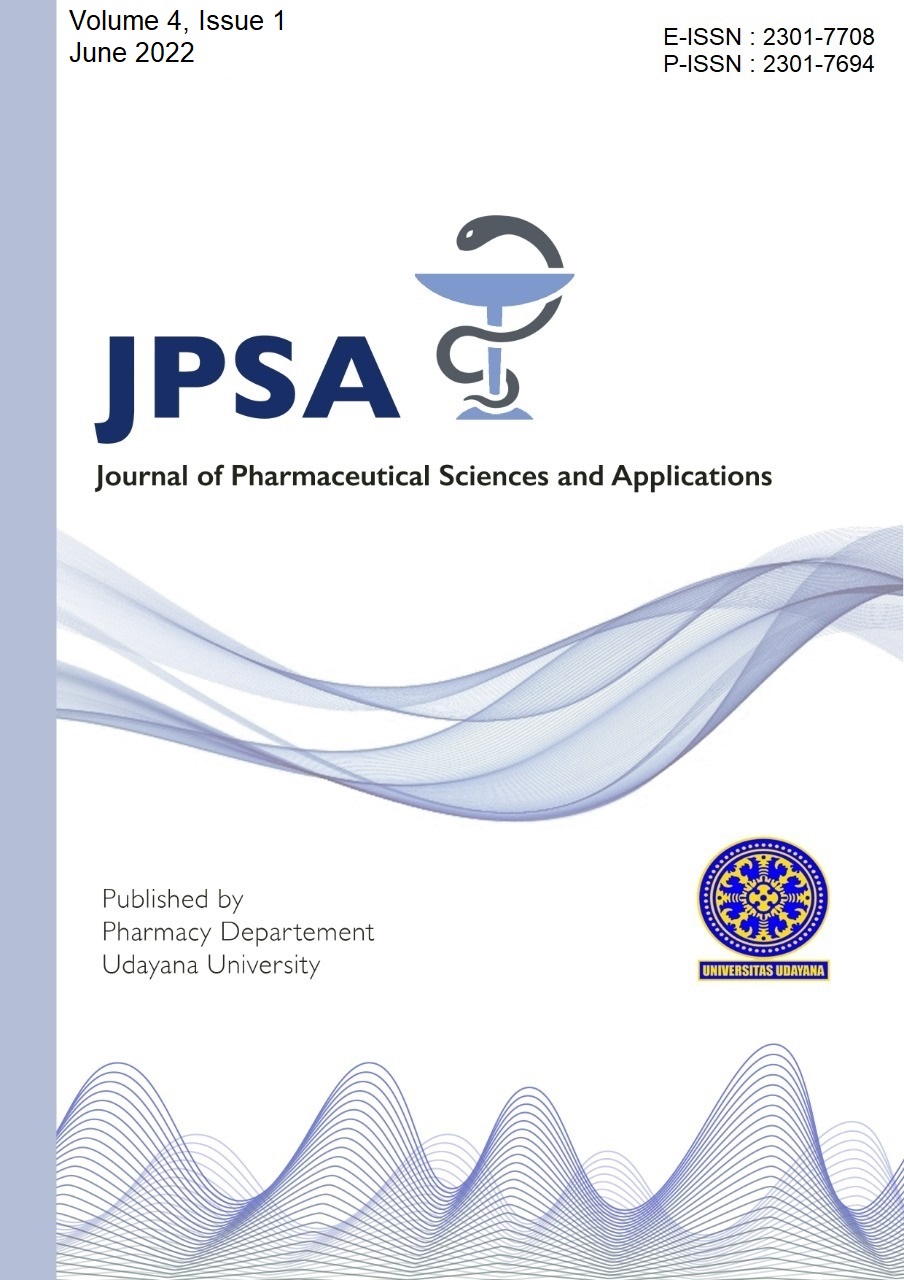THE EFFECTIVENESS TEST OF INFUSION CELERY ROOT (Apium graveolens L.) AS A DIURETIC IN WISTAR MALE WHITE RATS (Rattus Norvegicus)
A LITERATURE STUDY
Abstract
Background: Hypertension is defined by persistently elevated arterial blood pressure. The increase in systolic blood pressure is generally>140mmHg or diastolic blood pressure> 90mmHg. The prevalence of hypertension increases with lifestyle changes. Objective: To determine the diuretic effect of celery (Apium graveolens L.) on male wistar rats (Rattus norvegicus). Methods: This research uses a literature study method, the type of the research is descriptive qualitative with literature research (library research) systematic. Results: Based on research data, there were 5 groups of mice that received different treatments. Among the five treatment groups, 0.5 % CMC suspension (KP-) showed the least mean cumulative urine volume, and furosemide suspension (KP+) showed a large mean cumulative urine volume when compared to negative controls. Conclusion: Celery root infusion can increase urine volume because it contains flavonoids that play a role in increasing urine volume (diuresis).
Keywords: Diuretic, Celery (Apium graveolens L.), Furosemide, Hypertension, Wistar rats
Downloads

This work is licensed under a Creative Commons Attribution 4.0 International License.
Authors who publish with this journal agree to the following terms:
Authors retain copyright and grant the journal right of first publication with the work simultaneously licensed under a Creative Commons Attribution License that allows others to share the work with an acknowledgment of the work's authorship and initial publication in this journal.
Authors are able to enter into separate, additional contractual arrangements for the non-exclusive distribution of the journal's published version of the work (e.g., post it to an institutional repository or publish it in a book), with an acknowledgment of its initial publication in this journal.
Authors are permitted and encouraged to post their work online (e.g., in institutional repositories or on their website) prior to and during the submission process, as it can lead to productive exchanges, as well as earlier and greater citation of published work. (See The Effect of Open Access).

This work is licensed under a Creative Commons Attribution 4.0 International License.


 HOME
HOME
















